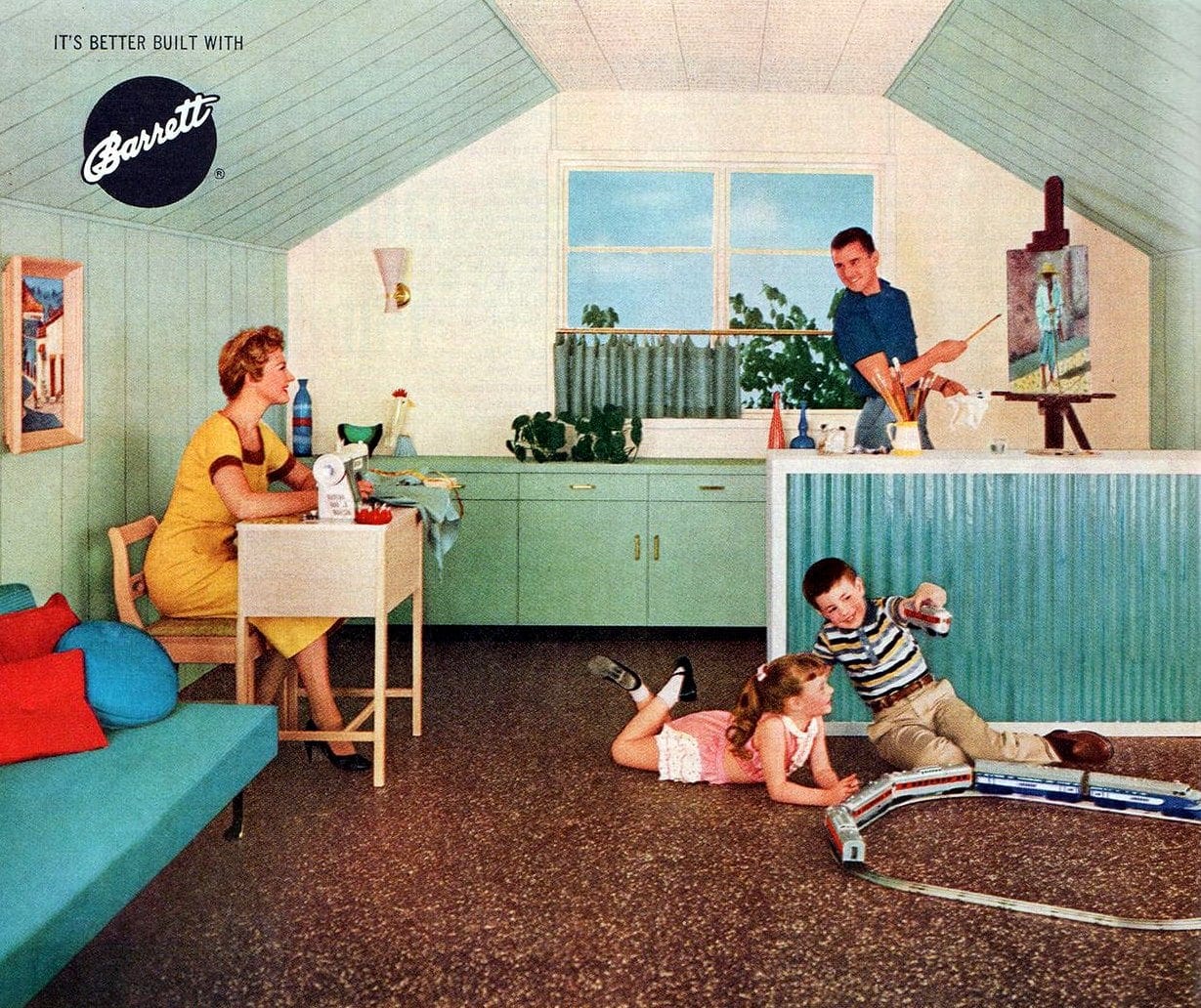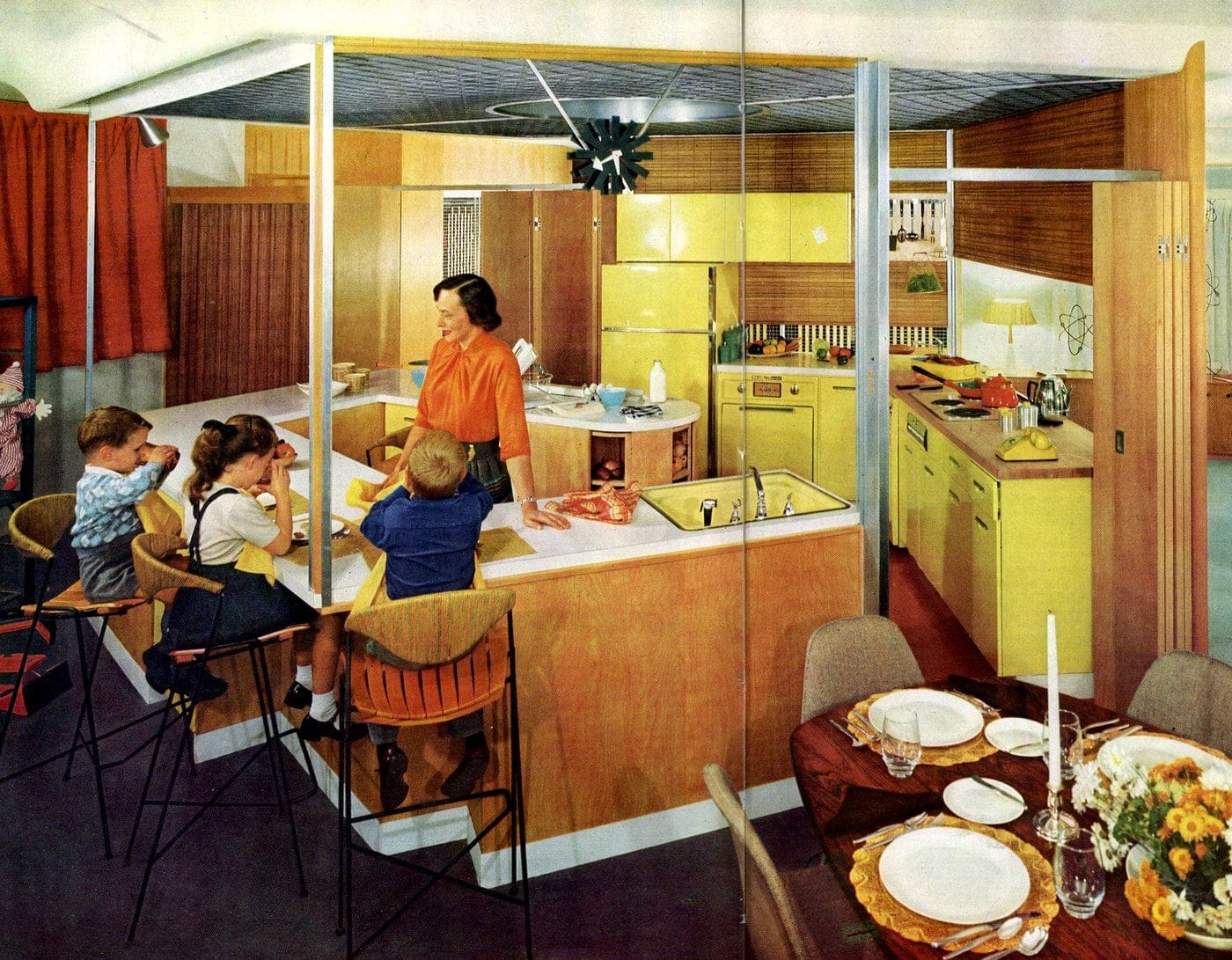How a short film helped sell the “perfect” 1950s family as the American standard
With the relatively new distraction of television, families would sometimes pick up dinner and adjourn directly to the couch to watch their favorite program — all of this, of course, long before the days of VCRs and streaming video services like Hulu, Vudu and Amazon that allow us to watch whatever we want, whenever we want.

But even back in the Leave it to Beaver era, already some folks thought there was a need to combat this alarming trend.
That’s where A Date with Your Family (1950) enters the picture. Long before this short film was skewered mercilessly by Mystery Science Theater 3000, the original laid out rules for how kids should behave at dinner, how the table should be set up, what to wear, what to talk about — all so that family dinner might resemble something like the ideal version people remembered (or wished they had experienced).

The film runs just ten minutes, but it’s packed with direction. The father comes home from work, the mother is already dressed nicely and preparing dinner, and the children have been tidying up and doing homework. The family gathers at a neatly set table and follows a clear routine. There’s a lot of emphasis on courtesy, patience and respect — and plenty of subtle reminders about knowing your place.
It also includes a series of don’ts: don’t bring up unpleasant topics, don’t interrupt, don’t speak out of turn. In short, keep the peace, keep it light and make the family meal a civil event.
So what were they selling with A Date with Your Family? It wasn’t a product, but a cultural ideal — the polished version of domestic life that many Americans were taught to strive for. In the context of postwar America, with a booming middle class and increasing emphasis on stability and social conformity, this version of family life became a kind of standard.

The film was one of many tools used to reinforce the idea that proper behavior at home reflected proper values. It served as both guidance and gentle pressure to fit a certain mold, especially as more families moved to the suburbs and began shaping their lives around new routines.
This version of the “perfect” 1950s family centers on order, predictability and clearly defined roles. The father leads, the mother supports, and the children follow. It leaves little room for other family structures or even for the kinds of everyday messiness that most households experience. There’s no space for disagreement, no visible stress and no deviation from the routine.
If this was supposed to be the natural rhythm of American home life, the film itself is proof that things weren’t always running that way. Families were changing. Work hours, commuting, new technology, shifting gender roles — they all pulled at the structure. This film worked like a reset button, offering a step-by-step for how to keep things looking orderly. For some people, it was familiar territory. For others, it was a new lesson in what was expected. Either way, it gives us a glimpse into the kind of family life 1950s culture worked hard to promote.

Below, along with the film itself, we’ve gathered photos and vintage advertisements from the same time period that carried the same message: tidy homes, cheerful families, respectful kids and clearly defined roles. Whether this was your reality growing up or a version you only ever saw on screen, these images and stories help us understand what was being asked of families — and what was at stake when they didn’t fit the mold.
Watch A Date with Your Family (1950)

More scenes in the life of a picture-perfect 1950s family
Making ice cream sundaes and treats for everyone (1959)

Children playing music for mother on a piano and recorder (1958)

Family playing with Tinkertoys (1957)

Mom and daughter in the kitchen (1959)

A fancy family dinner at the table (1959)

Mom & kids hanging out in their uniquely-shaped kitchen
ALSO SEE: Fab retro yellow kitchens from yesteryear: Sunny midcentury home decor
























One Response
Curious, but being grateful for having something to put on the table, and showing cordiality to your mother or sisters is something that today many women would like their partners and children to do, today we complain that young people can’t take their eyes off the screen, children screaming and making all kinds of scandals, women who do show their femininity are discriminated against and isolated by other women! The toilet before sitting at the table, changing clothes when you come home from the street, teaching children responsibilities, so that they do not fail in their married life, seems to be part of the past and shows it as something wrong, those who had that type of home life believe me miss it !!!